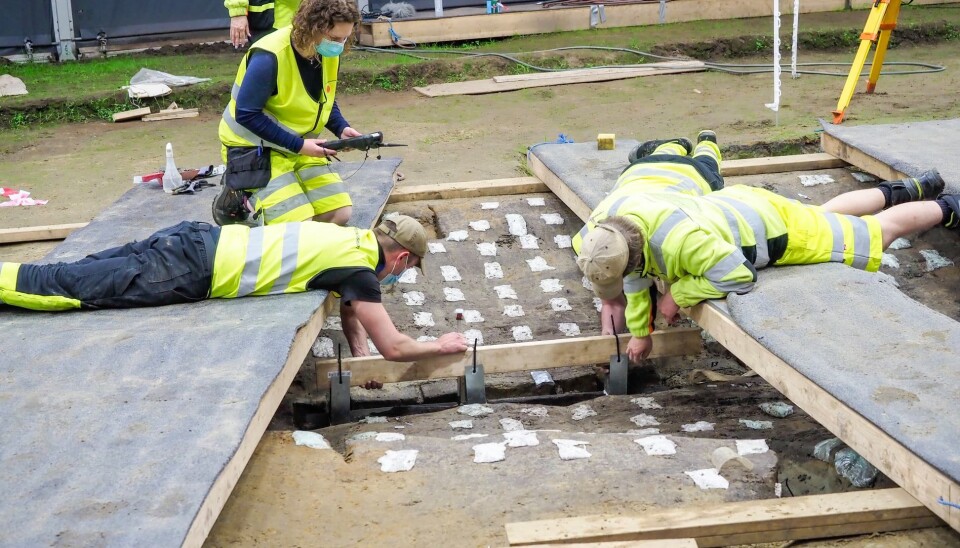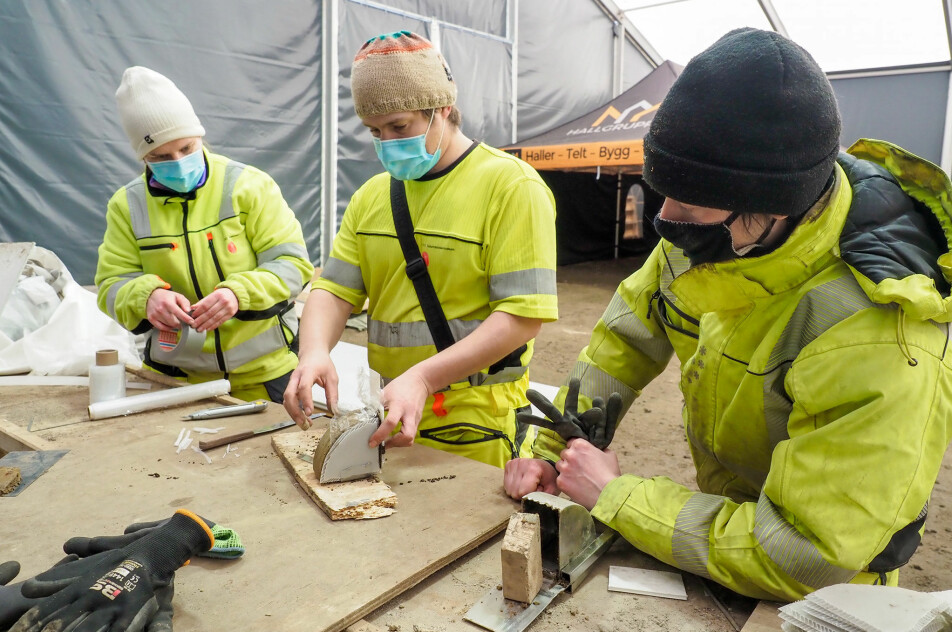
This piece of wood will help archaeologists reconstruct the grand Gjellestad Viking ship
It will tell us exactly when the ship sailed the seas, as well as how it sailed.
“We’ve waited to dig out this keel piece the entire summer, or since last year really,” Christian Løchsen Rødsrud says on the phone from the dig site outside the town of Halden in Eastern Norway.
Archaeologist Løchsen Rødsrud is the project manager of the Gjellestad ship excavation, the first Viking ship dig in Norway in 100 years.

Earlier this week, the team of archaeologists dug out the first keel piece of about 130 centimeters. Next week, a larger and even more well-preserved piece, 430 centimeters long, will be unearthed. The final piece, on the northern part of the ship has turned out to only exist in fragments but will also be added to the collection.

In shipbuilding, the keel is the main structural member and backbone of a ship or boat. It runs longitudinally along the centre of the bottom of the hull from stem to stern.
It is of particular importance to a reconstruction of the Gjellestad ship for three reasons, Løchsen Rødsrud explains.
The first reason is that this well-kept piece of wood helps date the ship. In 2019, when preliminary investigations of the ship were made, a piece of the keel was cut off in order to assess the time period the ship was built in.
“But we can come even closer to a more precise dating of the ship when we now investigate parts of the keel that are even better preserved than the piece we looked at then. If we also find parts of the strakes next to the keel that still has surviving year rings, we can also narrow down the time frame of the dating of the ship”, Løchsen Rødsud says.
It is believed that the Gjellestad ship is from the very beginning of the Viking Age, perhaps even as far back as the late 700s.

Did they sail or row?
The second reason for the importance of the keel, is that it is an actual artefact that can be exhibited in a museum.
“The rest of the ship is so dilapidated that while we can document it, it will mostly give us a digital imprint. But the keel can be part of an exhibition”, Løchsen Rødsrud says.
The third reason the keel is so exciting however, is also the most important: “It will tell us more about what kind of a vessel this is. The ship’s abilities on water, how it was used”, says Løchsen Rødsrud.
One question the archaeologists have yet to determine for instance, is whether the ship used a sail or rowing in order to move.
Several things indicate that rowing was the mode of movement: there has been no finding of a mast, or anywhere in the keel where this mast would have been fastened by a keelson and a mast partner.
“If there was in fact a mast we believe lowermost parts would have been preserved, as well as the keelson that held it in place just above the keel”, says Løchsen Rødsrud.
The keel in question is also quite narrow, in contrast to the Oseberg and Gokstad ships – both sailing ships – whose keels are far wider.

At the same time, the Gjellestad ship was used for a burial, and the mast could have been removed to make room for the grave chamber found in the middle of the ship. It is also possible that the mast was removed – either to be reused in another ship, or by grave plunderers.
“We believe this ship was from the very early stages of the Viking Age, and this coincides with the introduction of sails on ships in Scandinavia. If this in fact is a ship from the late eight century then there might have been good reason to use the mast in another ship, if this is new and costly technology that people had just started using,” the archaeologist says.
What the ship really looked like
Besides the keel, what will give the archaeologists the opportunity to create a digital reconstruction of the Gjellestad ship are all the nails. 1200 of them in total.

“Seeing as there isn’t so much left of the actual ship, these nails are very important for us. They are the data that will give us what we need in order to make a proper reconstruction,” Løchsen Rødsrud says.
The nails haven't been easy to dig out. They're so corroded that if excavated in the conventional manner, they would have dissolved.
So the Gjellestad team had to create their own method. Each nail is carved out as a block of soil with a nail in it. Each and every one of these nails, surrounded by the soil in which they have existed for a thousand years, will then be CT-scanned and entered into a great three-dimensional project.
From these data, a very realistic ship will appear, according to Løchsen Rødsrud.



“We have incredible digital models that are way ahead of what we have had for other objects. We will be able to create an incredible reconstruction,”,he says.
“This is the fourth well documented Viking ship in Norway, even if there isn’t so much left of it compared to the three that you find in the museum at Bygdøy.”
But enthusiasts will have to wait a while to see the vision.
“Scanning each of the nails will perhaps take about a year,” Løchsen Rødsrud estimates.
And scanning the nails is just the first step. After this a ship reconstructor needs to combine all the available data in the 3D model and draw up all the details needed in order for the ship to come alive.
8000 pieces of a puzzle
The Gjellestad dig hasn’t produced all that many concrete artefacts. But this was as expected, seeing as the grave most likely was pillaged some 50-100 years after it was closed, and perhaps disturbed again when the area was made into farmland in 1880. The other ship graves in Norway have also been robbed and there have been no findings of silver or gold, even though they most certainly contained this.
What the archaeologists do have however, is a grand catalogue of 8000 fragments of iron and copper alloys.
“We have a great job ahead of us in order to try and find out what kind of items these fragments were once a part of”, says Løchsen Rødsrud.
One of the greatest findings are of some beautiful beads, and then of course the keel.
———
The archaeologists in team Gjellestad have also spent a lot of time trying to understand the actual happening of a ship burial. Read more about this here:


































